

by Daniel Varghese, August 21, 2020, 8:00 AM EDT · 21 mins read
You’re probably here because your dentist or dental hygienist told you to go home and google “best electric toothbrushes.” And though we have some reasons to be suspicious of dentistry, there is a lot of (peer reviewed!) evidence showing that electric toothbrushes are more effective at reducing plaque and gingivitis than their manual counterparts. It isn’t an enormous stretch to say that the best toothbrush for most people is an electric toothbrush.
Actually taking your dentist’s recommendation and purchasing an electric toothbrush used to be fairly simple—there were only a few reputable brands making them, so you didn’t have a lot of choice. But, as you know if you’ve listened to a podcast in the last three years, the electric toothbrushes market has been disrupted. Some of the companies doing the disrupting have even moved into selling full-blown oral care regimens including floss and toothpaste. Point is, if you want to buy an electric toothbrush today, you have more options than ever.
These toothbrushes have features that range from the useful (like pausing every 30-seconds so that you know to move to a different area of your mouth) to the confounding (why does anyone need a “polish” and a “whitening” mode?). After a broad survey of all the electric toothbrushes on the market, we decided to mostly test models that offered the quadrant pauses, easily replaceable brush heads, and cost less than $100. Later, we tested some promising upgrade options that came well-recommended from a few celebrities.
Since we started testing brushes last year, we’ve tested fifteen different brushes from nine different companies. While brushing each morning and evening, we paid close attention to how the brushes felt against our teeth, whether the brush was heavy or uncomfortable to hold, and whether the brush was too loud for a pre-coffee brain to handle. Everyone’s bar for downloading a new app is, but we tried to assess whether a reasonable person would actually get something out of any phone app a toothbrush called for downloading (if you haven’t looked at toothbrushes in a while, yes, they come with apps now). And while we didn’t weigh aesthetics too heavily, we’ll admit to being suckers for something that looks good on a sink ledge.
We considered all additional features, like extra cleaning modes (shoutout “gum health” mode!), and pressure sensors. After all that, we found several you’d actually want to use every day, morning and night. Here are the best electric toothbrushes.
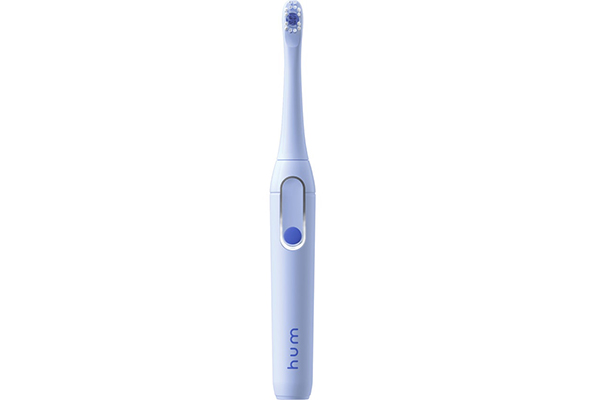
Colgate Hum rechargeable electric toothbrush
$70.00, Colgate
BUY NOW
The Colgate Hum is not the first smart electric toothbrush. But it is the first that might actually convince you to spend some part of your morning staring at a disembodied set of teeth on your phone screen. I’ll explain further in a moment—first, the basics: The brush head is gentle, but not so gentle that it feels ineffective. The handle is lightweight, comfortable to hold, and easy to actually maneuver around, so that you don’t miss any spots while brushing. And best of all, its smart features don’t jack up the price of this brush and make it more expensive than other similar electric toothbrushes.
Brushing with the Colgate Hum without connecting it to the app is basically the same experience as brushing with a toothbrush like the Burst toothbrush (which we review below). Both employ the same back-and-forth brush heads, though the Hum doesn’t have charcoal-infused bristles. The Hum also has a 30-second timer built-in, so that when it pulses, you know to move to another quadrant of your mouth. Unlike the Burst, however, when you hit two minutes, the Hum doesn’t immediately shut itself off. We think this is an advantage, because it allows you to do that oh-so-satisfying final pass over your teeth after the time has elapsed, just in case you missed something.
Back to the app: If you can be convinced to hook up the brush to your phone (a steep hurdle, admittedly), you will get a…guided brushing experience. The app tracks where in your mouth your bristles are aimed in real-time. If you’re looking at your phone, it’ll give you target areas to focus your attention, so that you get the front, top, and back of every tooth in every area of your mouth. In this mode, the brush won’t pulse every 30 seconds. Instead, the app prods you to move on from a section of your mouth when it senses you’ve adequately cleaned it. The first time we brushed while using it, it made us brush for almost 3 minutes. But honestly, having something to focus on made the time go by a lot faster. It was actually…kind of a fun game? And, unlike after using other smart brushes with overpowered motors, the prolonged brush won’t make teeth feel like they are going to vibrate out of your gums. And, like any good game, in addition to helpful data about your session, the Colgate Hum gives you “smile points” that you can use for discounts on refill brush heads and even a new brush.
The best part about these app features—the reports, the active guidance, and the smile points—is that you can access them even if you don’t want to use the app while you’re brushing. Even if you don’t want to bring your phone into the bathroom with you in the morning (or, more likely, would prefer to use that time to scroll Instagram), you can still get genuinely helpful reports to improve your brushing.
To be fair to other smart brushes, this technology isn’t revolutionary. Brushes like the Philips Sonicare DiamondClean and the Oral-B iO have support for offline cleaning built-in. What makes the Colgate Hum special is that it brings these capabilities to a brush that costs less than $100. And furthermore, the tech works just as well. Though it costs less than a third of the price of the DiamondClean, the Colgate Hum doesn’t feel like a compromise at all. Before the Hum, we found the concept of a smart toothbrush contemptible. Now that it exists, it seems like a no-brainer choice for dental health.
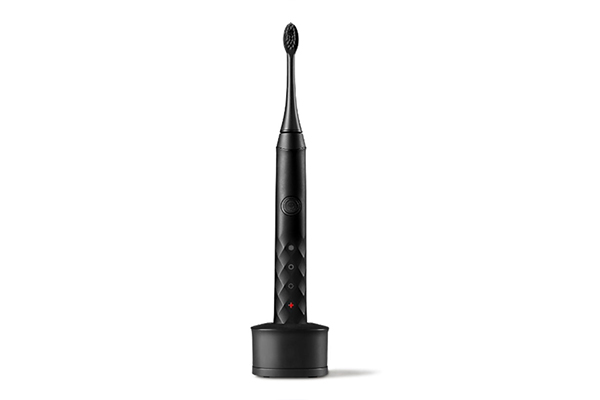
Burst Sonic Toothbrush
$70.00, Burst
BUY NOW
If you value simplicity and do not want a toothbrush that even suggests you download an app, consider the Burst toothbrush. The Burst is the rare product clogging up the promoted posts and stories of your Instagram feed that is actually good. The simple, rechargeable brush, which the company has spared no expense to inform you is sponsored by CHRISSY TEIGEN, has a tapered handle that’s very comfortable to hold. Like those from the Sonicare ads of old, the Burst’s bristles vibrate back and forth, supposedly tens of thousands of times per minute. Luckily, this doesn’t mean the Burst feels like it’s attacking your teeth—the brush has a really gentle action that was pleasant to wake up to in the mornings. And because the bristles aren’t that long and the brush head isn’t that thick, the brush head fits in any mouth comfortably. We could use it without spraying spit and toothpaste all over our bathroom mirror.
Once the brush’s two-minute timer has elapsed and it turns itself off, you can just leave the Burst on your counter or in your medicine cabinet. The battery life should last for a few weeks of normal use between chargers. When you’re ready to charge it, you just set the toothbrush in its stand and plug the stand’s USB cord into the wall with the included adapter. You could also plug it into your computer, assuming it still has USB-A ports.
The Burst is a bit pricier than some of the other subscription-based toothbrushes we considered. A white or black brush will cost you $70 and the subscription for new brush heads costs $6 every 90 days. If you want the brush in rose gold, you’ll pay $100 for the brush and $7 for the subscription to refill brush heads. One more reason to get the subscription, it gives you access to a lifetime warranty on your brush. But if you don’t subscribe you still get two years.
One thing about the Burst does give us slight pause: it’s “charcoal infused” bristles. Burst and many companies that make charcoal infused toothpaste claim that charcoal gives the toothbrush additional whitening capabilities. As dentists quoted in a report in Scienceline pointed out “there’s simply not enough evidence to back the promises made for using charcoal for oral hygiene.” This isn’t because all dentists are convinced brushing with charcoal is bad, it’s rather that there hasn’t been enough research done into the topic. The few studies conducted mostly conclude that more studies need to be done. For now, the Burst’s advantages outweigh any of our minor concerns about charcoal, particularly since we’ve been using charcoal grooming products with no issue for the last few years.
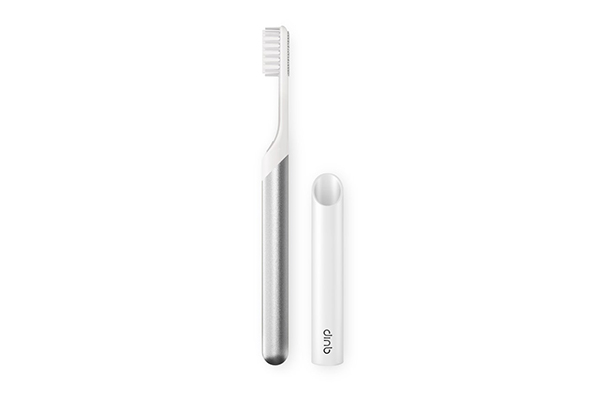
Quip Toothbrush (metal)
$40.00, Burst
BUY NOW
We’ve really liked the Quip electric toothbrush since we first tested it back in 2017. As with the Burst, the Quip is basically foolproof. Both brushes have the two minute timer and pulse every 30 seconds, so that you know exactly how long to spend in each quadrant of your mouth. Both brush heads also vibrate back and forth, rather than rotate, but the Quip features a tongue scraper on the back of its brush head. You might not really use it, but it’s nice to know it’s there.
The main differentiating factor, immediately evident when first see the brush, is its striking design. The Quip has a sleek, metal handle—more the shape of a manual toothbrush than the thick electric toothbrush design you’re probably familiar with. The company can achieve this because the Quip uses a removable battery, which is meant to be replaced every three months rather than recharged. If you subscribe to the brush head and battery subscription, you get a lifetime warranty on your brush. Without the subscription, you only get the warranty for a year, but you can just replace the battery with the extra AAA batteries you have from your remote control.
Perhaps it’s to ensure that the battery actually lasts for the three months in between when you get that new one and brush head, but we’ve found that the quiet Quip and its soft bristles felt a little gentle on teeth. But, for what it’s worth, we tend to prefer a vigorous brush and a “squeaky” clean. The American Dental Association has said the product is “safe and has shown efficacy in removing plaque and helping to prevent and reduce gingivitis, when used as directed” with its Seal of Acceptance. But after the two-minute Quip cycle, we always felt ourselves furrowing our brows, wondering whether we should just brush again. The weaker vibrations might be good for someone who is a chronic over-brusher or hard-brusher (both real problems), but we think most people will feel like our other picks clean their teeth more thoroughly.
That said, the Quip brush is the best electric toothbrush for travel that we tried in this round of testing. This is primarily because it’s so small, but also because of Quip’s multi-use cover. That cover fits over the brush head, to keep it clean while you travel. When you’ve reached your destination, you invert it and can stick it to any flat, glossy surface—like a mirror or tiled wall—and drop your toothbrush in. It’s a trick, kind of like fully unpacking your suitcase, that will make whatever hotel, AirBnb, or guest room you’re staying in feel a bit more like home.
In the summer of 2020, Quip released a version of the brush with smart connective features, similar to those on the Colgate Hum. For reasons we’ll get into later, our favorite version remains the plain-jane, metal version of the Quip, which costs $45. If you want to save some money, you can also get a colorful plastic version of the Quip for $25. It works just as well as the metal one, but it looks a bit less sophisticated. We think the metal one is worth the extra $20 up front.
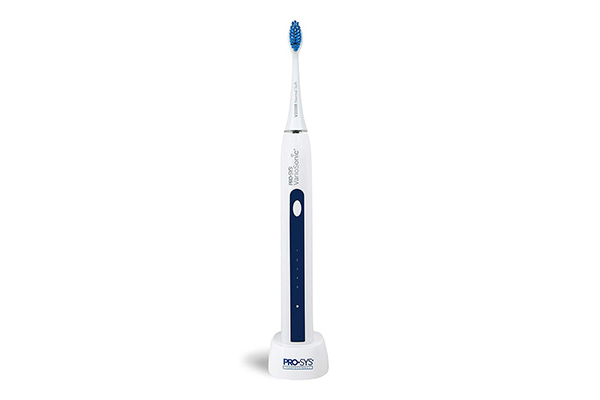
PRO SYS VarioSonic Electric Toothbrush
$80.00, Amazon
BUY NOW
You’d be forgiven for never having heard of the Pro-Sys VarioSonic Electric toothbrush. The company that makes it, Benco Dental, mostly sells supplies and equipment directly to your friendly neighborhood molar whisperers. But despite being made by a company that lists several milling machines in its catalog, the Pro-Sys toothbrush actually looks…pretty nice!
Like the majority of the brushes we tested for this guide, the Pro-Sys toothbrushes have a head that vibrates up and down, rather than oscillates back and forth. The biggest comparative advantage of the Pro-Sys brush is that it comes with five different kinds of brush heads, something we generally only see in more expensive brushes like the Philips Sonicare Diamond Clean. Those five bristles get increasingly softer, which allows you to have a bit more control over how aggressively the brush cleans your teeth. Regardless of which bristles we used (or which of the five cleaning modes we tried), we found the brushes motor struck a good balance between being powerful enough to scrape off gunk and plaque, without being so powerful that it’ll give you a headache. And it did that without putting out a level of noise that would wake up a sleeping roommate.
Getting replacement heads for the Pro-Sys brush isn’t as easy or cheap as it is with any of the other brushes we’ve tested. The company doesn’t have a program that sends them to you on a regular interval. Nor are they generally stocked in drug stores. You can buy them on Amazon, but you’ll have to pay the slightly-high price of $20 for 3. But if it keeps you from having to visit the dentist more than once a year, that’s a price worth paying.
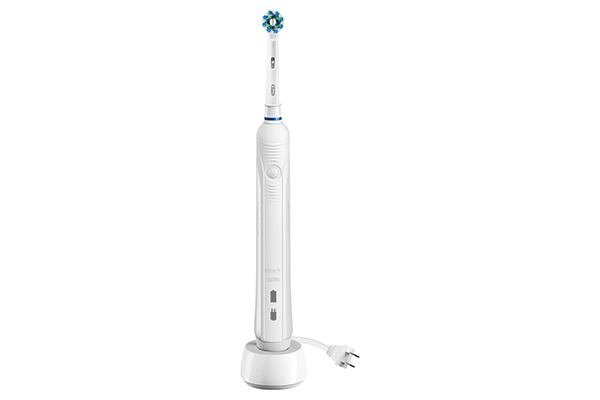
Oral-B 1000 CrossAction Electric Toothbrush
$50.00, Walmart
BUY NOW
The Oral-B Pro 1000 uses a different brush head motion than any other option on this list. Instead of vibrating back and forth, the Oral-B bristles quickly rotate clockwise and counterclockwise. The efficacy of one brush motion over the other hasn’t been studied in great detail, up to date studies only have enough data to conclude that using any kind of electric brush is usually better than using any kind of manual brush, so your decision will likely come down to personal preference. Personally, I’m not a fan of rotating bristle motions. Using a brush like this one makes my teeth feel like a wet towel being wrung out. If you have sensitive teeth, stay clear.
But among the few brushes with this kind of motion we tested, we found the Oral-B brush to be the least unpleasant to use. Sure, its motor is a little loud, probably not the brush to use if you’re an early riser and your bathroom is close to anyone that sleeps in a bit, but the rotational motion on this brush didn’t leave my teeth in pain, like some others. Plus, the Oral-B has all the basic functionality you need and is so ubiquitous that replacement brush heads (genuine and cheaper knockoff) are easy to come by. It’s also the favorite brush of both Wirecutter and The Strategist.
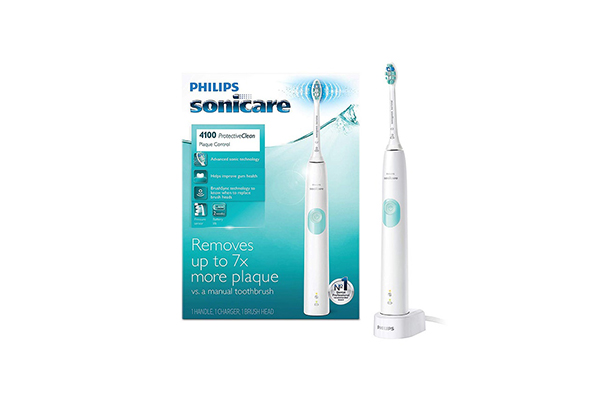
Philips Sonicare ProtectiveClean 4100
$50.00, Amazon
BUY NOW
If the idea of ordering a toothbrush from a startup company seems fishy, or you don’t want to deal with a subscription service, the rechargeable Philips Sonicare 4100 is the best electric toothbrush we tested made by a company with a long track record making electric toothbrushes. It’s the “sonic toothbrush” you probably think of when you imagine an electric toothbrush.The Sonicare’s brush head vibration felt just as effective at cleaning as our top pick—and it has the same two minute timer (offering reminder pulses every 30-seconds).The brush is quite powerful, which makes it a little loud. When you’re not quite awake, it can be jarring, but it’s not so bad that it feels unpleasant to use.
The big advantage of using a brush from a long-standing manufacturer is that you can easily find cheap replacement brush heads for it. While replacement brush heads with the Sonicare logo can cost about $7 each, you can find counterfeit brush heads, which work just as well, for about $2 each. In the long-term, that would make the Sonicare toothbrush much cheaper than the Burst and the Quip, though you’ll have to actually remember to restock when you run out. The Philips Sonicare brushes also come with a two year warranty.
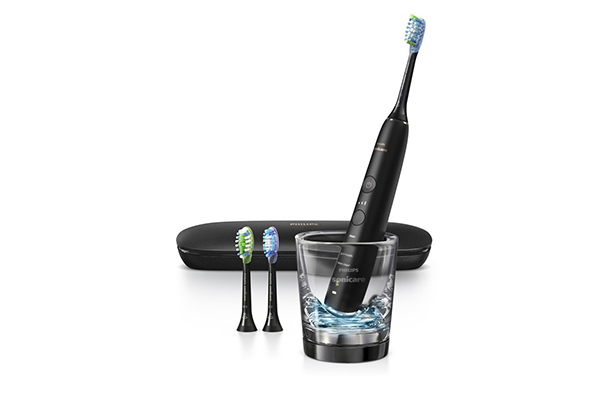
Philips Sonicare DiamondClean Electric Toothbrush
$200.00, Amazon
BUY NOW
Frankly, the high-end Philips Sonicare DiamondClean toothbrush is a bit ridiculous. It’s filled to the brim with bells and whistles, including four different types of brush heads (including one for your tongues), five different cleaning modes, a unique charging system, a pressure sensor, and Bluetooth connectivity. When compiled in a list, this feels like the exact kind of product that nobody needs. And maybe that’s true. But after brushing with the DiamondClean for a few days, it’s hard to go back to brushing with anything else.
That’s in large part due to just how powerful the DiamondClean’s motor is. This brush uses the same kind of back and forth motor motion as the Burst, Quip, and other Sonicare models, but the bristles on the DiamondClean appear to move a lot faster. We noticed this immediately the first time we used it. It feels kind of like applying a Theragun directly to your teeth, pounding out plaque, massaging away gingivitis. Your teeth might vibrate for a solid 30 seconds after taking the brush out of your. It is a bonafide deep clean.
Among the additional features, the one we’re most enamored with is the charging cup. Most electric toothbrushes are either powered with a replaceable battery or have a charging stand. The DiamondClean is among the latter group, except its charging stand is actually a glass cup. To charge the DiamondClean, instead of having to line up the hole on the bottom of the toothbrush with the end of a stand, as you do with the Burst, Oral-B, and other Sonicare models, you just have to toss it in the cup. It works a lot like wireless charging on newer cell phones. This is a really silly thing to get excited about, but we must admit that it gets us excited every time. There’s something so satisfying about just tossing the toothbrush into the cup and hearing it beep and light up to indicate charging.
Do you need a toothbrush with five different cleaning modes, four different brush heads, and an app that uses your cleaning data to nudge you to buy more brush heads and teeth cleaning products? Absolutely not. (For what it’s worth, the app is perfectly functional and does a good job tracking how much of your teeth and gums you’re actually brushing.) But if you’re looking for a brush with the best possible base-level cleaning power, this is the one.
And you don’t have to just take our word for it. It’s the toothbrush used by musician Saint Jhn and, reportedly, Beyonce and Jay-Z. Good enough for Hov, good enough for you.
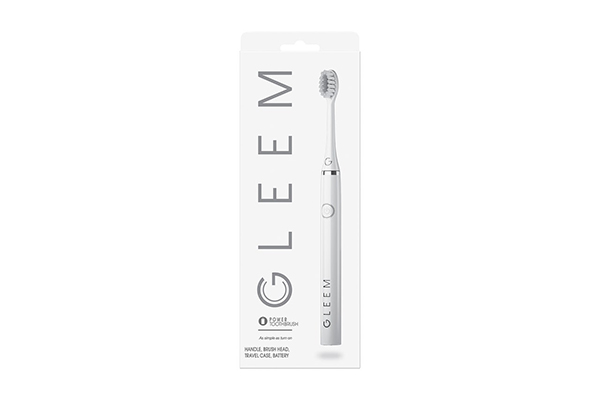
GLEEM Electric Toothbrush, White
$20.00, Walmart
BUY NOW
If you want an electric toothbrush, but aren’t ready to invest in something top-tier, the relatively-new Gleem Electric Toothbrush is the cheapest possible one you should consider. It’s got the most basic features one expects from an electric toothbrush, including an accurate timer that pulses every 30 seconds and ends after 2 minutes. It doesn’t have any modes beyond the most basic, but it does have a fairly powerful motor. Honestly, maybe a little too powerful. The first time I, a person who brushes regularly with an electric brush and goes to the dentist once a year, my gums bled. A lot. It was gross. But after the bleeding, to the brush’s credit, my teeth looked amazing. The Gleem brush, like the Quip, has a removable AAA battery. No one is going to send you one every three months, but even if they would, you’re smart enough to know you can just go down to a pharmacy and get a pack of a bunch them for cheaper, right?
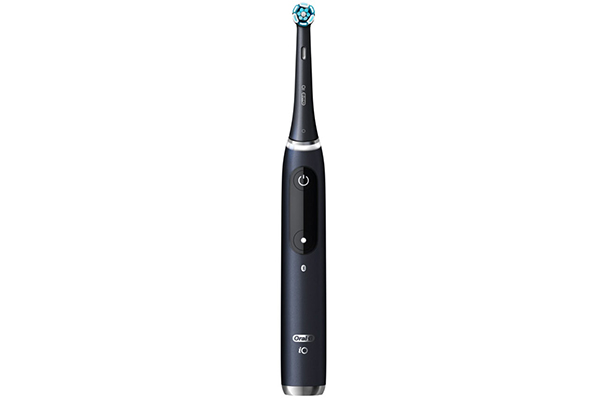
Oral-B iO smart electric toothbrush
$300.00, Oral-B
BUY NOW
The Oral-B iO is the most feature-loaded, high-end smart toothbrush we’ve tested so far. For $300, you get an electric toothbrush with a rotating brush head, several brush heads and brushing modes, a smart pressure sensor, and, of course, an app. In many ways, the brush offers a friendly-user experience. It’s tracking works well, which ensures you actually brush every part of your mouth. The smart pressure sensor powers a ring of light on the brush itself, that flashes red if you’re brushing too hard. And while having a screen on your toothbrush is absurdly unnecessary, it admittedly makes choosing a brushing mode a lot easier. Plus, when you finish brushing all of your teeth, it displays a smiley face. Honestly, this rules.
The problem with the Oral-B iO comes down to two issues. It is a heavy, metal brush. That makes it feel worth $300, but it also makes it feel kind of annoying to brush with every morning. It makes sticking with a brushing session for two minutes or longer kind of hard. On top of this, the toothbrush head on Oral-B’s brushes are notoriously tall, which means using them requires opening your mouth super wide to accommodate it, then clamping down to make sure you don’t splash toothpaste all over your bathroom mirror. Unless you have a Nick-Kroll-sized mouth, this is kind of unpleasant. Beyond this, the Oral-B iO doesn’t have our favorite luxury feature of the Philips Sonicare DiamondClean: a glass charging cup. It has a nice magnetic stand, but that doesn’t look nearly as nice in your bathroom. If you’re willing to spend a lot of money on a toothbrush and prefer brushes with a rotating brush head, then you’ll be happy with the iO.
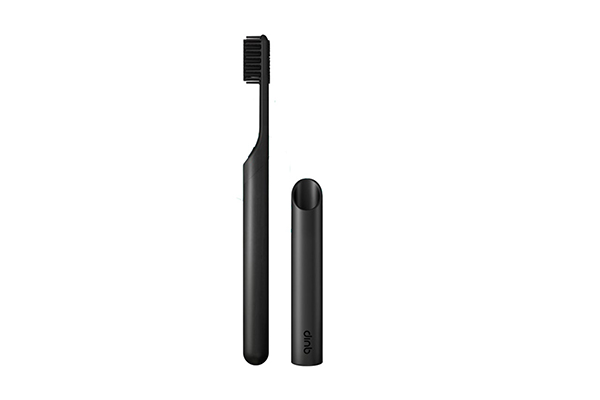
Quip smart electric toothbrush
$65.00, Quip
BUY NOW
The Quip smart toothbrush has the exact same body and shape as the regular Quip electric toothbrush. But its internal motor has been swapped with one that can pair with your phone via Bluetooth. This unlocks support for a Quip app and a suite of smart tracking features. Compared to those on the Colgate Hum, these features are a little basic. The data collected is directionally helpful and is presented clearly, but the app doesn’t provide the insight you actually need to take advantage of it. For example, the app keeps track of your “coverage” too broadly to be of much use. Where the Colgate Hum divides your mouth into nine different sections, the Quip divides it into two. All you’ll see from the app is how much time you spent brushing the top and bottom sections of your mouth. This is extremely weird, especially since the brush still pulses every 30-seconds for two minutes, indicating that you’re supposed to approach brushing in four sections. The Quip also keeps track of the number of strokes you make with the brush, but again, beyond telling you that the number probably shouldn’t be over 200, it isn’t clear how this is helpful.
The one feature the smart Quip and the Hum have in common is an internal currency system. And you can actually redeem points you earn by brushing with the Quip to buy things like travel case and even as real money, in the form of…Target gift cards!? But if you’re actually looking for a smart toothbrush, the Colgate Hum is an improvement in almost every way.